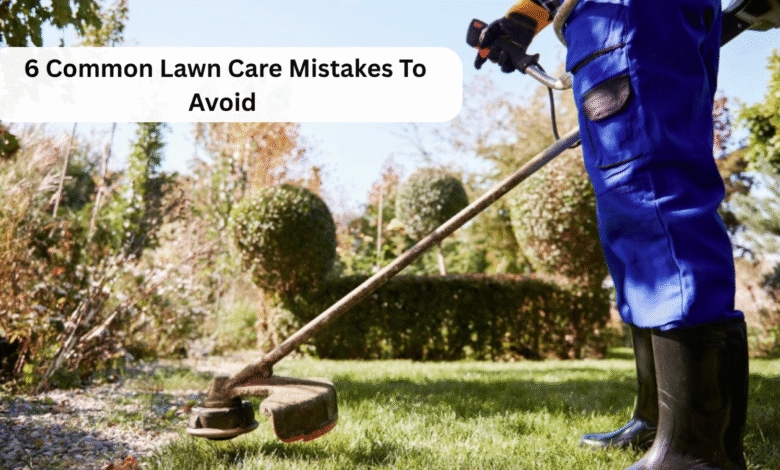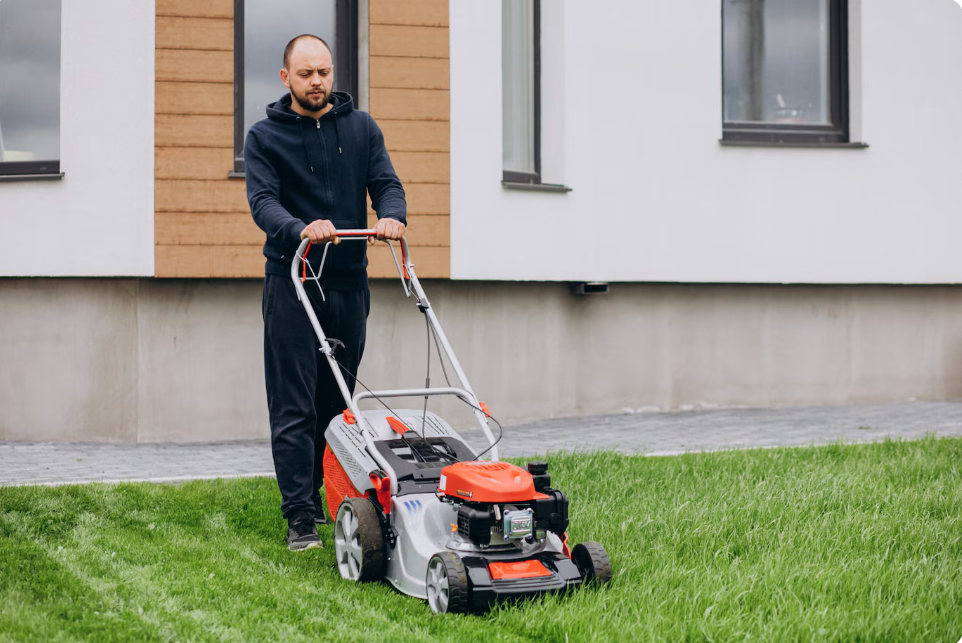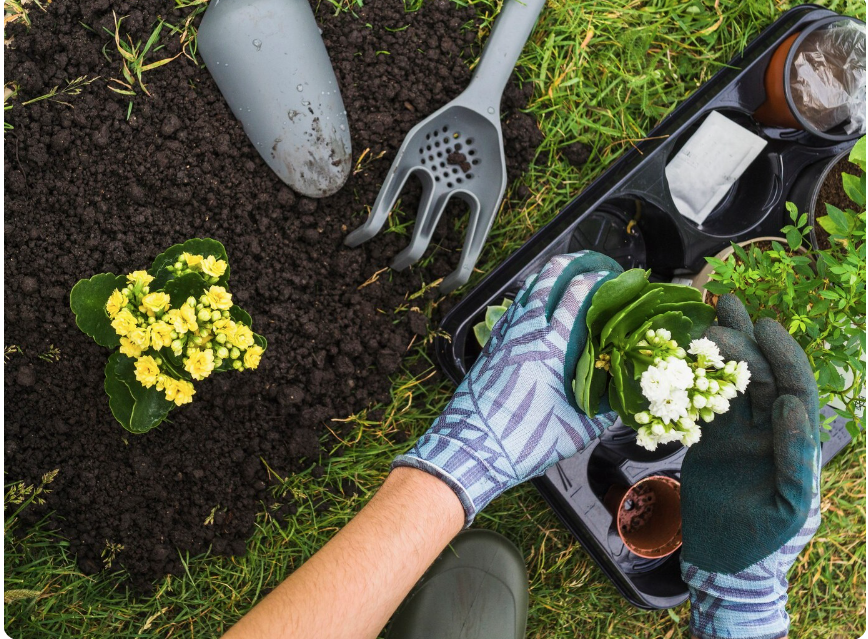6 Common Lawn Care Mistakes To Avoid

Nothing is better than going outside to see a green, lush lawn across your yard. It forms the heart of beautiful landscaping, increases the curb appeal of your home and provides a welcoming atmosphere to family and friends. However, as much as homeowners dream of the lawn that is beyond perfection, few realize that common mistakes they make every day can ruin it.
There is more to lawn care than mowing on a schedule or watering the lawn when it appears dry. Moreover, simple mistakes, such as mowing the lawn too low, overwatering, or failing to maintain soil health, can easily damage a beautiful lawn into an ugly, patchy mess overgrown with weeds.
However, these errors can be easily avoided after being informed about them.
Curious to know more?
This article outlines six common mistakes related to lawn care and their solutions, which can make a significant difference in ensuring your lawn looks lush, healthy, and beautiful.
1. Using Fertilizer Improperly
Fertilizing your lawn without proper timing, amount, or type of fertilizer can be more damaging than beneficial.
For example, excessive fertilizer will kill grass, induce pest-attracting excessive growth, and result in toxic nutrient runoff into surrounding water bodies. Conversely, under-fertilization or using the incorrect product at the wrong time will weaken and starve your lawn, causing it to lose its density and color.
Solution: Avoid costly errors by hiring an expert lawn services provider who can determine your lawn’s unique requirements through soil inspection. They’ll also advise the correct fertilizer type, proper application methods, and the suitable fertilization schedule based on your grass variety.
2. Neglecting Weed and Pest Prevention
Weeds and insects are not only unsightly; they also steal water, sunlight, and nutrients from your lawn.
Speaking of which, allowing weeds to reach full maturity often leads to insects inflicting visible damage. As a result, you might have to control their infestation with more aggressive and sometimes less environmentally friendly treatments.
Solution: Be proactive. For instance, to control weeds, maintain a dense, healthy lawn that will naturally suppress weeds. Plus, you should treat your garden with pre-emergent herbicides in early spring to prevent weed seeds from germinating. Alternatively, check your lawn regularly for the earliest signs of pests such as grubs, chinch bugs, or fungal disease.
That said, remember, Integrated Pest Management (IPM) strategies emphasize prevention and reduced pesticide use, maintaining your lawn ecosystem in balance and good health.
3. Mowing Too Short

One of the most frequent errors is mowing the lawn too low. Far too many people believe that mowing lower will help them mow less often, but this technique—known as “scalping”—is ironically bad for your lawn. That is because blades of grass are really solar panels for plants, as they reflect sunlight and turn it into energy. Moreover, higher grass has deeper roots, leading to improved moisture retention and natural weeding.
That is why mowing them too low stresses the grass, making it prone to weeds, insects, and drought stress.
Solution: Follow the “one-third rule.” That means never take off more than one-third of the grass height at a time. You can also mow 2.5 to 4 inches, depending on the type of grass.
4. Overwatering or Underwatering
Watering errors are also a common reason for lawn maintenance mishaps.
In this context, owners often overwater, or fail to water at all, during dry periods. For example, too much water causes soggy soil that suffocates roots and promotes fungal growth, while underwatering can cause stress in grass. As a result, it causes brown spots and makes the lawn vulnerable to weeds.
Solution: Water deeply but on fixed dates. However, you should provide 1 to 1.5 inches of water per week. You can also water early in the morning for the best effect, allowing grass time to soak up water before the sun’s heat increases. It is important because watering promotes deep root growth, and your grass will be more resistant to drought.
5. Neglecting Soil Aeration and Well-Being

Your lawn’s well-being starts with the soil. In this context, compacted soil repels roots from developing, reduces oxygen levels, and keeps water and nutrients from reaching the ground. Yet, the majority of homeowners neglect soil health, assuming that fertilizers alone will suffice.
Solution: Check your soil every few years to examine pH levels and nutrient levels. Most lawns prefer a slightly acidic to neutral pH (6.0 to 7.0). You should also aerate your lawn annually—at least in the fall or early spring—to reduce compaction.
Moreover, perform core aeration, which pulls out small sections of soil, allowing air, water, and nutrients to reach the roots more effectively.
6. Ignoring Lawn Maintenance Seasonality
Most homeowners mistakenly follow the same lawn care regimen throughout the year. However, they do not realize that each lawn has varying needs at different times of the year.
This mistake can weaken the grass and expose it to weeds and insects. For this reason, seasonal modification is needed.
Remember, in the spring, apply dethatching, aeration, and pre-emergent weed control. Also, summer necessitates mowing heights to be raised and deep watering in order to manage heat stress.
That’s not all. Fall is the perfect time for aeration, overseeding, and root-strengthening fertilization. Moreover, remember to limit foot traffic in winter to prevent damaging dormant grass.
Conclusion
Lawn care doesn’t have to be complicated, but avoiding these six common mistakes is crucial for achieving a healthy, vibrant yard. From mowing height and watering habits to soil health and seasonal care, small changes in your approach can yield noticeable improvements in your lawn’s appearance and resilience.
Hence, by staying informed and attentive, you can create a lawn that becomes a space you enjoy spending time in.




